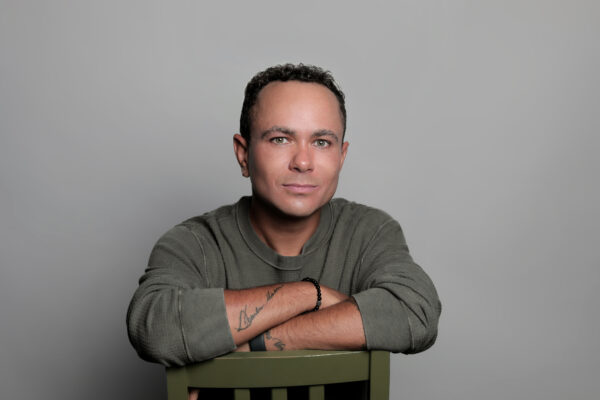More than 100 jobs got cut from SAMHSA this week. That’s on top of the several hundred eliminated earlier this year. The Substance Abuse and Mental Health Services Administration (the federal agency that’s been the backbone of addiction treatment infrastructure since George H.W. Bush was president) has had its workforce cut nearly in half.
If you run a private treatment center that operates on commercial insurance and private pay, you might be thinking: “Okay, but we don’t take SAMHSA grants. We’re not sitting around waiting for federal block grants to make payroll. Why should I care about this?”
Fair question. Here’s the uncomfortable answer: SAMHSA is the connective tissue holding together the ecosystem your business operates in. They’re coordinating crisis response, training first responders, distributing naloxone, collecting the national data that informs everything from insurance policies to state regulations. When infrastructure like that gets gutted, everyone feels it. Including the facilities that never took a dollar of federal money.
Think of it this way: you don’t need to be a farmer to notice when the grocery store starts running out of produce.
Where Your Clients Actually Come From (And What Happens When That Pipeline Gets Clogged)
Let’s start with something concrete: your referral sources.
SAMHSA administers the 988 Suicide and Crisis Lifeline. You know, the number that’s handled more than 14 million calls since 2022. When someone calls 988 at three in the morning because they’re terrified they’ll use again, it’s often a SAMHSA-funded counselor who answers. And those counselors? They’re referring people to treatment. Sometimes that’s to a community clinic, but often it’s to facilities like yours.
So what happens when call center capacity drops because half the coordinating staff is gone?
Calls go unanswered. Or they take longer to answer. Or the quality of the counseling degrades because the people left are overwhelmed and undertrained. Someone who would have gotten connected to help at 3 AM just… doesn’t. They use instead. Maybe they make it to tomorrow, maybe they don’t, but either way they didn’t end up in your admissions funnel.
The same goes for community crisis centers (many of them SAMHSA-funded) that serve as the bridge between acute crisis and your admissions team. These are the places catching people before they end up cycling through emergency departments, losing momentum, and never making it to treatment. When these centers close or reduce capacity, you lose referral sources. More people bounce around the healthcare system getting band-aids instead of getting connected to actual help.
And first responders? SAMHSA trains them. SAMHSA-funded programs put naloxone in their hands and teach them how to talk to someone who just overdosed about getting into treatment. When those training programs lose support, the quality of those interactions degrades.
Your pipeline shrinks. Not because you’re doing anything wrong. Just because the infrastructure that feeds it is falling apart.
The Market Is About to Get Weird
The facilities that will feel these cuts first and hardest are Medicaid-funded programs and community clinics operating on SAMHSA grants. They’ll close or reduce capacity. Some will shut down entirely.
Now here’s where it gets interesting for you: those patients don’t disappear. Some of them will show up at your door. People who might have gone to a community program but now have nowhere else to turn. If they have commercial insurance or can find a way to pay, that’s a potential admission for you.
But (and this is a big but) many of them won’t. They’ll just not get help. Or they’ll wait until the crisis is so acute that they end up in an ED or the justice system instead of treatment.
A smaller market of people successfully connecting to treatment means more competition among private facilities for fewer admissions. It means families calling around to more places, payers getting more aggressive about denials, and everyone fighting harder for the same pool of clients.
There’s also a geographic component here. When community clinics close, commercial insurers lose in-network options in certain regions. That could create opportunities for out-of-network facilities like yours. Or (and this feels more likely) it could increase scrutiny on out-of-network claims as payers try to control costs in a tighter market. State agencies scrambling to fill gaps in coverage may also create new regulatory requirements or certification processes that didn’t exist six months ago.
And then there’s the data problem, which is maybe the most insidious part of all this.
SAMHSA collects national data on treatment outcomes, utilization patterns, and emerging trends. That data (pulled from thousands of facilities across the country) informs insurance company policies, state licensing requirements, and medical necessity criteria. When the agency responsible for that data is gutted, the quality and reliability of that information degrades.
Less reliable data means more arbitrary decision-making by payers. It means medical directors at insurance companies making utilization management decisions based on incomplete or outdated information. It means your appeals are harder to win because there’s no authoritative national benchmark to point to.
Fun times ahead.
The Naloxone Thing That Nobody’s Talking About Yet
Even if your facility has never applied for a SAMHSA grant, you’ve probably benefited from their naloxone distribution programs. SAMHSA coordinates national naloxone access initiatives that make it possible for treatment centers (and families, and harm reduction programs, and first responders) to get naloxone affordably or for free.
You use naloxone. For discharge planning. For harm reduction. For keeping people alive while they’re working up the courage to try again. If there are supply chain disruptions or if the price goes up because federal coordination disappears, that hits your budget. Insurance reimbursement for naloxone could also shift without a federal agency coordinating coverage standards.
It’s one of those invisible infrastructure things you don’t think about until it breaks. Like assuming the water will always come out of the tap until one day the pipes burst and suddenly you’re Googling “how to shower with bottled water.”
Things That Might Not Happen Now (Which Is Maybe Worse Than Things That Will)
SAMHSA doesn’t just distribute money and answer phones. They also disseminate evidence-based practices and coordinate the translation of research into clinical reality. When a new treatment modality shows promise, when protocols need updating, when the field needs to adapt to emerging drugs or changing patient populations, SAMHSA is supposed to be the connective tissue between researchers, clinicians, and policymakers.
Without institutional capacity, that process slows down or stops entirely. The field moves slower. Your clinical team has fewer resources for staying current. The distance between “this works in a study” and “this is standard practice at treatment centers” gets longer.
There’s also the federal-state coordination role that SAMHSA plays. They mediate between federal policy and state implementation. Helping states understand new regulations, coordinating multi-state initiatives, providing technical assistance when states are trying to update their licensing requirements or scope of practice rules.
Without that buffer, expect more state-by-state chaos. Licensing requirements could diverge further. Billing codes and documentation standards could get messier. Compliance becomes more complex because there’s no coordinating body helping states stay on the same page.
If you operate in multiple states, you’re about to have a really fun time keeping track of all this.
What This Looks Like Six Months From Now
Here’s what I think you’ll see by spring (and I really hope I’m wrong about some of this):
Fewer warm transfers from crisis lines. When your admissions team gets a call, it’ll less often be because someone had a good experience with a crisis counselor who connected them to you. It’ll more often be because they Googled “rehab near me” at two in the morning and yours was the first number they called that didn’t go to voicemail. (Not to cross-talk, but you should call us and get an audit of your digital marketing strategy now so you’re prepared).
More clients presenting from the justice system rather than being diverted to treatment before they get arrested. The infrastructure that catches people early and redirects them? That infrastructure is going to have gaps. Big ones.
A patchwork of state responses as governors and state agencies try to figure out how to fill the holes left by federal dysfunction. Some states will step up with funding and new programs. Others won’t. If you operate in multiple states, compliance is about to get significantly more complicated and expensive.
Potential shifts in payer behavior as the data ecosystem degrades. Insurance companies make decisions based on benchmarks and outcomes data. When that data gets less reliable, they get more conservative. Or more arbitrary, depending on how charitable you’re feeling about their motives.
And your clinical team is going to be working harder to find post-discharge resources for clients. Community programs that used to be there for aftercare, for MAT, for ongoing support? Some of them won’t be there anymore. You’ll be discharging people into a thinner safety net, which means you’ll probably see more readmissions down the line.
We’ve Survived Federal Incompetence Before (But This Feels Different)
Look, if you’ve been in this field for more than five minutes, you know that navigating federal dysfunction is just part of the job description. Administrations change, priorities shift, agencies get reorganized or gutted or rebuilt. Private treatment providers have always had to be nimble, resourceful, and occasionally willing to operate in spite of (rather than because of) federal policy.
But this feels different in scale. Cutting half the workforce from the coordinating agency for addiction treatment in the middle of an overdose crisis isn’t routine political dysfunction. It’s not a policy disagreement or a budget negotiation. It’s a dismantling of infrastructure that took decades to build.
And for what? I genuinely don’t know. Maybe there’s some 4D chess happening that I’m not smart enough to see. Maybe this is all part of some master plan to improve addiction treatment by… making it harder to coordinate addiction treatment? I’m open to being surprised here, but I’m not holding my breath.
The work continues anyway. Your clinical teams will keep showing up. Your admissions staff will keep answering the phone. Your clients will keep needing help, and you’ll keep providing it, because that’s what you do.
But stay connected to your state associations. Watch for market shifts. Pay attention to what’s happening with payers and regulators in your region. Talk to your peers about what they’re seeing. Share information. Help each other navigate this.
This is going to get messy before it gets better.





